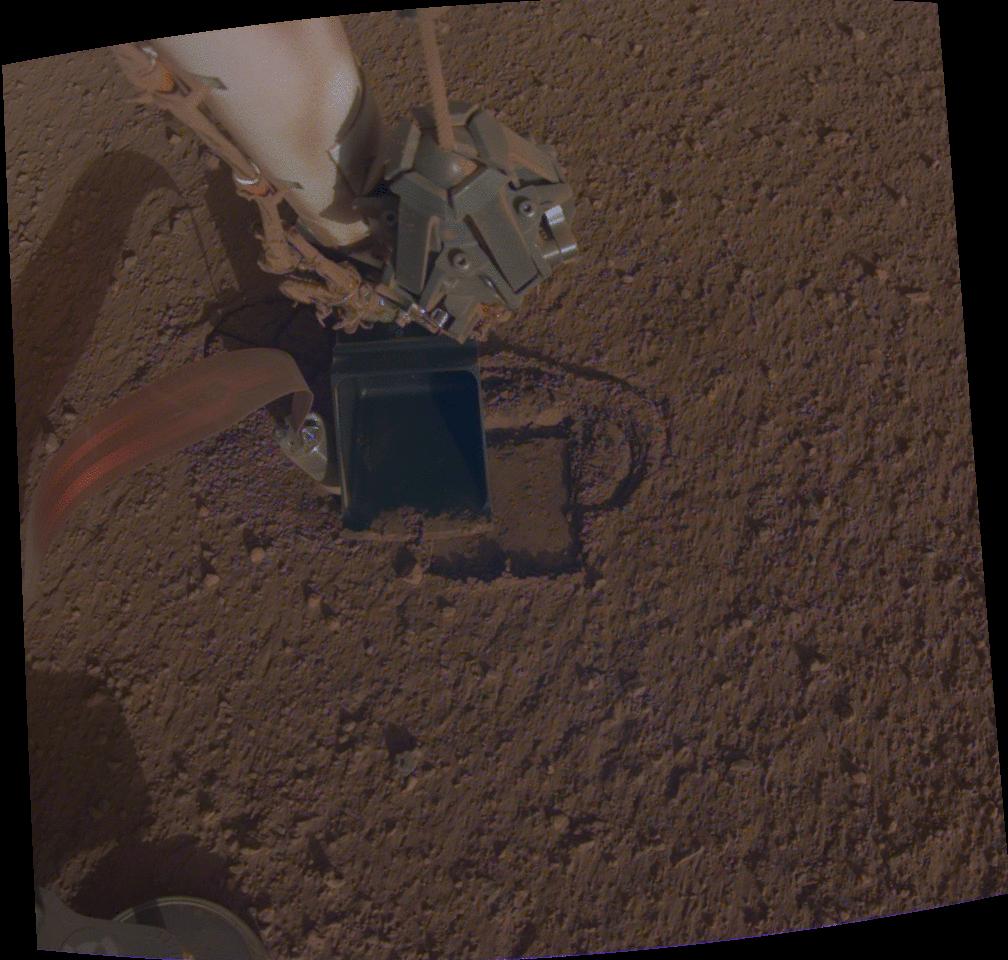
Finally, some good news for NASA’s InSight lander, which has been struck on Mars due to a part of its drill called “the mole” becoming wedged in the soil. Back in March the drill stopped moving, in a problem that was at first thought to be because it had hit a rock. But further investigations led the scientists to conclude that the issue was more likely due to the composition of the soil that InSight had been digging into. The soil turned out to be unexpectedly tough, meaning the drill could not generate enough friction to cling on to and move itself through.
With the drill stuck, there was no way to pick it up and move it to a different location. There is a support structure around the mole which can be moved, however, so the team used the robotic arm to remove the supports and get a closer look at the issue.
With the supports cleared, the team first tried using InSight’s robotic arm to press down onto the soil, hoping to compact it enough to give the drill something to grip onto. That was unsuccessful, so the engineers tried a risky and creative strategy instead: Moving the entire instrument containing the mole, the Heat Flow and Physical Properties Package (HP3), as far away from the lander as possible and using the scoop on the end of the robotic arm to push the mole into the soil, in a technique called “pinning.”
With an assist from my robotic arm, the mole is digging again! We are just starting this new campaign, and are hopeful we can continue to dig.????#Mars #Teamwork pic.twitter.com/Wkj7OhVG2y
— NASA InSight (@NASAInSight) October 15, 2019
All of this patient hard work has now paid off, and the mole has dug nearly 2 centimeters in the past week. That might not sound like much, but after six months of being stuck this progress is significant and gives hope InSight can get back to being fully operational. “Seeing the mole’s progress seems to indicate that there’s no rock blocking our path,” Tilman Spohn, HP3 Principal Investigator, said in a statement. “That’s great news! We’re rooting for our mole to keep going.”
This optimism is shared by others involved in the InSight project, who are delighted to see progress. “The mole still has a way to go, but we’re all thrilled to see it digging again,” Troy Hudson, an engineer and scientist at NASA’s Jet Propulsion Laboratory who has led the mole recovery effort, said in the same statement. “When we first encountered this problem, it was crushing. But I thought, ‘Maybe there’s a chance; let’s keep pressing on.’ And right now, I’m feeling giddy.”
Editors' Recommendations
- NASA is looking for volunteers for yearlong simulated Mars mission
- NASA’s Mars helicopter still working fine after month-long break
- How one NASA lander decoded secrets lying beneath the surface of Mars
- NASA restores contact with Mars helicopter after nine weeks of silence
- NASA’s June skywatching tips include Mars in the Beehive




